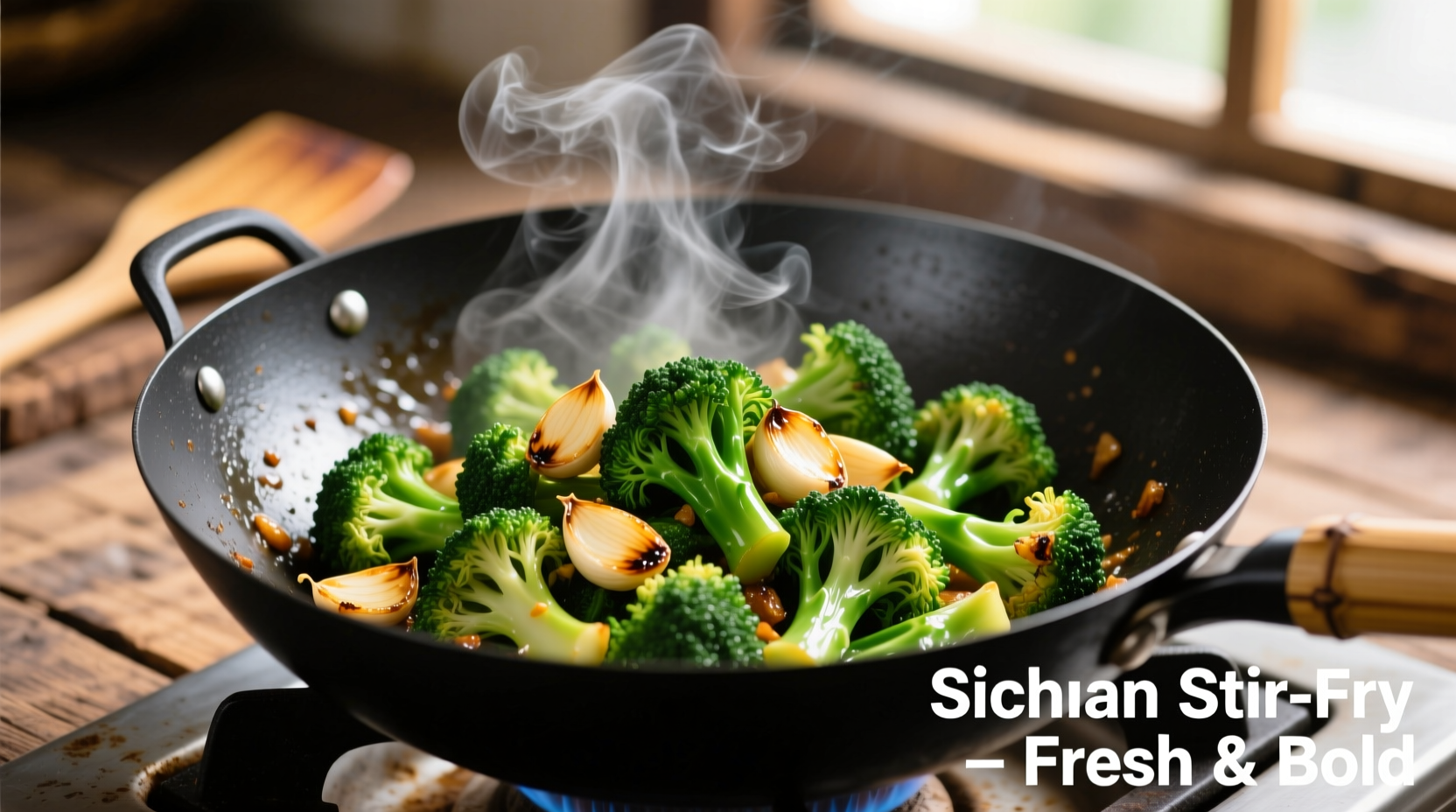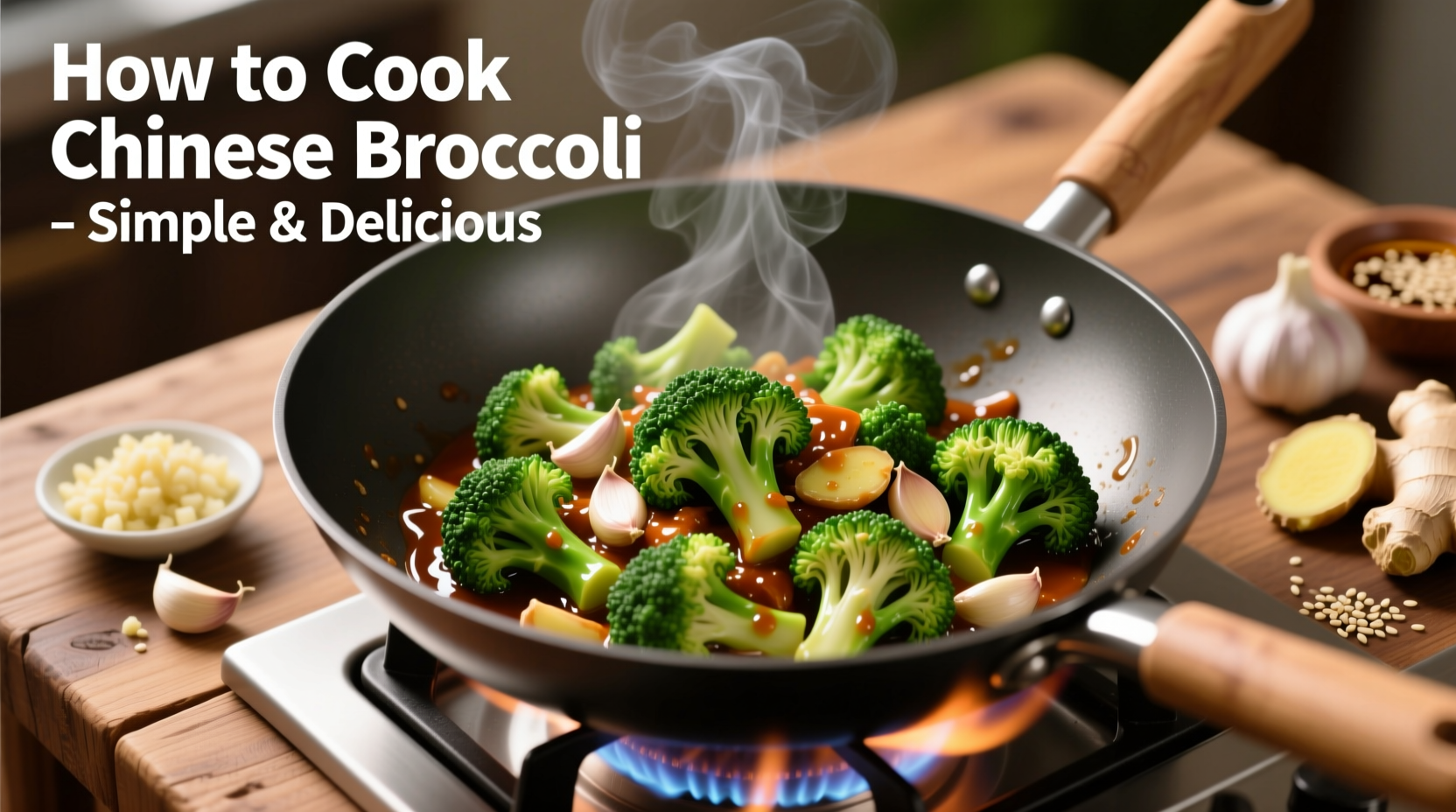The perfect way to cook Chinese broccoli (gai lan) is by blanching it in salted water for 2-3 minutes followed by a quick stir-fry with garlic and oyster sauce. This method preserves its vibrant green color, creates crisp-tender texture, and enhances its natural flavor while adding authentic Chinese restaurant-style seasoning.
Have you ever brought home Chinese broccoli only to end up with limp, bitter stalks that lack that restaurant-quality flavor? You're not alone. Most home cooks struggle with this versatile vegetable because they treat it like regular broccoli rather than understanding its unique characteristics. As a chef who's prepared thousands of plates of authentic Chinese cuisine, I've discovered the precise techniques that transform gai lan from bland to brilliant in under 10 minutes.
Understanding Chinese Broccoli: What Makes It Different
Chinese broccoli, known as gai lan or kai lan in Cantonese, isn't actually related to the broccoli you find in Western supermarkets. This leafy green vegetable features thick, succulent stalks, broad dark green leaves, and small white flower buds. Unlike regular broccoli, gai lan has a more pronounced bitter-sweet flavor profile that becomes beautifully balanced when cooked properly.
Grown extensively throughout Southern China and Southeast Asia, this nutrient-dense vegetable contains significant amounts of vitamins A, C, and K, plus calcium and iron. According to the USDA FoodData Central, a 140g serving provides over 100% of your daily vitamin K needs and substantial antioxidants that support bone health and immune function.
| Cooking Method | Time Required | Texture Result | Best For |
|---|---|---|---|
| Blanch & Stir-fry | 8-10 minutes | Crisp-tender stalks, vibrant color | Authentic restaurant-style dishes |
| Steaming | 6-8 minutes | Firm yet tender, minimal flavor loss | Health-focused meals, delicate sauces |
| Direct Stir-fry | 5-7 minutes | Crunchy texture, bold flavor absorption | Quick weeknight meals, strong seasonings |
The Essential Preparation Process
Before cooking, proper preparation makes all the difference. Start by examining your Chinese broccoli for freshness—look for crisp, dark green leaves with firm, non-wrinkled stalks. Avoid any with yellowing leaves or soft spots.
Washing technique: Fill a clean sink with cold water and add 1 tablespoon of vinegar. Submerge the gai lan and swish gently to dislodge any dirt trapped between the leaves and in the crevices of the stalks. Soak for 3-4 minutes, then rinse thoroughly under running water. This method effectively removes sand and potential pesticides while preserving the vegetable's integrity.
Cutting properly: Use a sharp chef's knife to separate the thick stalks from the leafy portions. Cut stalks into 3-inch diagonal slices (this increases surface area for better flavor absorption) and leaves into 2-inch pieces. The diagonal cut isn't just for presentation—it creates more edge surface that caramelizes beautifully during cooking.
Mastering the Three Cooking Methods
Method 1: The Restaurant-Style Blanch & Stir-fry (Recommended)
This professional technique delivers that perfect crisp-tender texture you experience in authentic Chinese restaurants. You'll need:
- 1 bunch Chinese broccoli (about 1.5 lbs)
- 4 cups water + 1 tbsp salt for blanching
- 2 tbsp vegetable oil
- 3 garlic cloves, minced
- 1 tbsp oyster sauce (or vegetarian alternative)
- 1 tsp sesame oil
- 1/4 cup broth or water
- Bring a large pot of salted water to rolling boil
- Blanch stalks for 90 seconds, then add leaves and blanch 60 seconds more
- Immediately transfer to ice water bath for 1 minute to stop cooking
- Heat wok over high heat until smoking, add oil
- Add garlic and stir 15 seconds until fragrant but not browned
- Add drained broccoli, stir-fry 60 seconds
- Pour in broth, oyster sauce, and sesame oil
- Cook 30-60 seconds until sauce coats vegetables
- Serve immediately

Method 2: Simple Steaming Technique
When you want to preserve maximum nutrients and enjoy the vegetable's natural flavor, steaming works beautifully. Place a steamer basket in a wok or large pot with 1 inch of water (ensure water doesn't touch basket). Bring to simmer, add broccoli stalks first, steam 3 minutes, then add leaves and steam 2-3 minutes more until bright green and tender-crisp. Finish with a light drizzle of seasoned soy sauce.
Method 3: Direct Stir-fry Method
For weeknight efficiency, skip blanching. Heat oil in wok, add stalks first and stir-fry 2 minutes, then add leaves and continue cooking 3-4 minutes until tender. The key is adding a splash of water and covering briefly to create steam that helps cook the thick stalks without burning the leaves.
Critical Mistakes That Ruin Chinese Broccoli
Even experienced cooks make these common errors that turn gai lan from delicious to disappointing:
- Overcooking: Chinese broccoli becomes mushy and loses its vibrant color in just 30 seconds too long. Set a timer!
- Adding sauce too early: Sugar in sauces caramelizes quickly and burns at high wok temperatures
- Using cold ingredients: Room temperature garlic and sauce prevent proper flavor development
- Overcrowding the wok: Creates steam instead of the essential sear (cook in batches if needed)
Flavor Pairing Secrets from Chinese Kitchens
While garlic and oyster sauce create the classic preparation, Chinese cuisine offers numerous regional variations worth exploring. In Cantonese cooking, try adding a pinch of sugar to balance bitterness. For Sichuan-style, incorporate 1/2 teaspoon Sichuan peppercorns toasted and ground. Shanghai chefs often finish with a splash of Shaoxing wine. The vegetable's natural bitterness pairs exceptionally well with umami-rich ingredients like dried scallops or fermented black beans.
For those following dietary restrictions, Chinese broccoli adapts beautifully. Vegan cooks can substitute mushroom sauce for oyster sauce. Those managing blood sugar should avoid adding extra sugar, as the vegetable's natural sugars caramelize perfectly during cooking. The vegetable's high fiber content makes it an excellent choice for weight management diets.
Storing Leftovers and Meal Prep Tips
Properly stored, cooked Chinese broccoli maintains quality for 3-4 days in an airtight container in the refrigerator. For meal prep, blanch the vegetable as described but stop the cooking process completely in ice water, then store unseasoned in containers. When ready to eat, simply stir-fry with your sauce—this prevents sogginess from sauce absorption during storage.
Raw Chinese broccoli keeps best when wrapped in damp paper towels inside a perforated plastic bag in the crisper drawer. Use within 3-4 days for optimal freshness. Never wash before storage, as excess moisture accelerates spoilage.
Why This Method Works Every Time
The blanch-and-stir-fry technique succeeds because it addresses Chinese broccoli's unique structure. The thick stalks require more cooking time than delicate leaves, which would overcook if treated the same. By blanching first, you partially cook the entire vegetable evenly, then the quick stir-fry develops flavor without further cooking the vegetable. The ice bath step is crucial—it stops the cooking process instantly, preserving that perfect crisp-tender texture that defines professional Chinese vegetable preparation.











 浙公网安备
33010002000092号
浙公网安备
33010002000092号 浙B2-20120091-4
浙B2-20120091-4